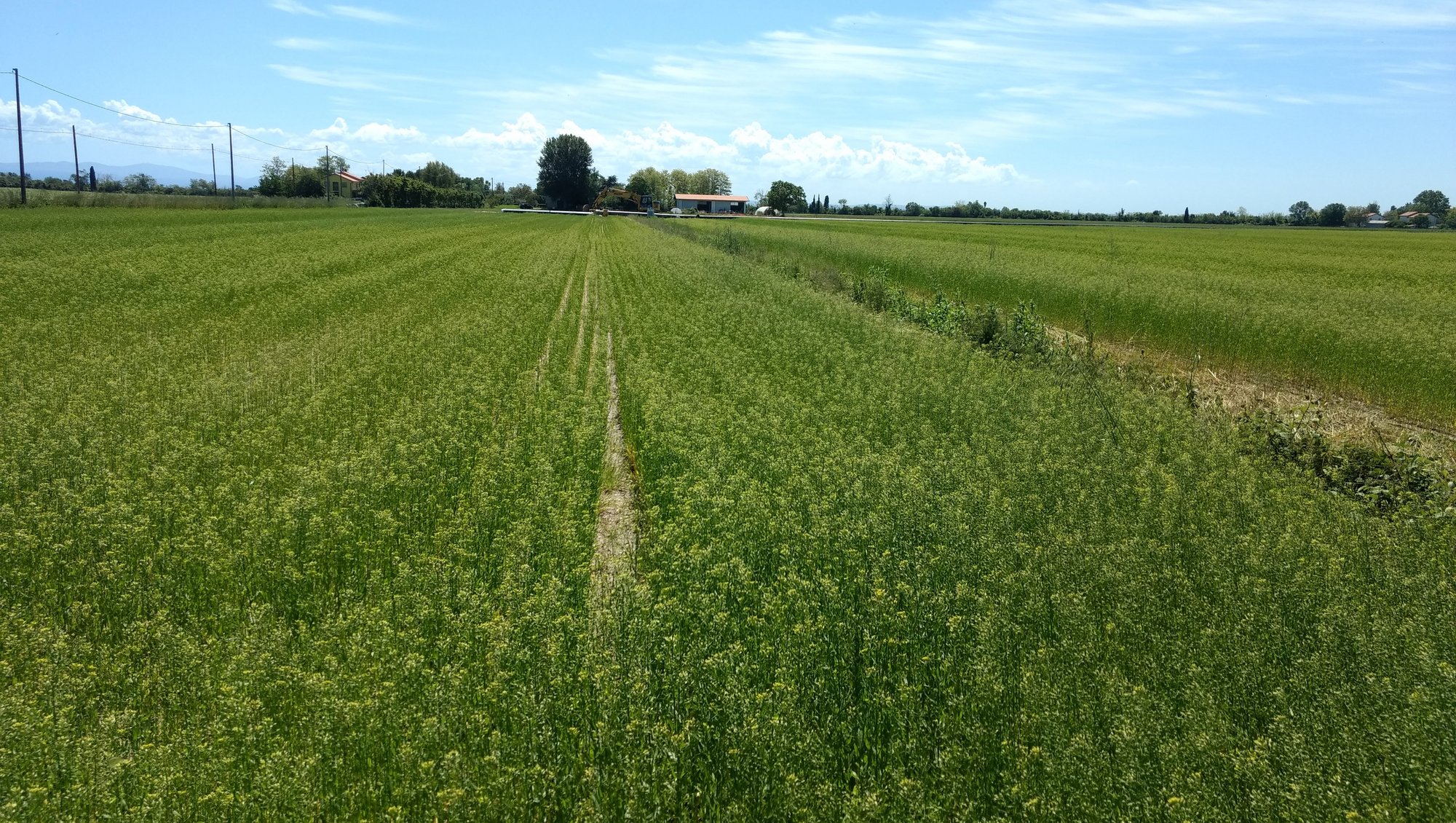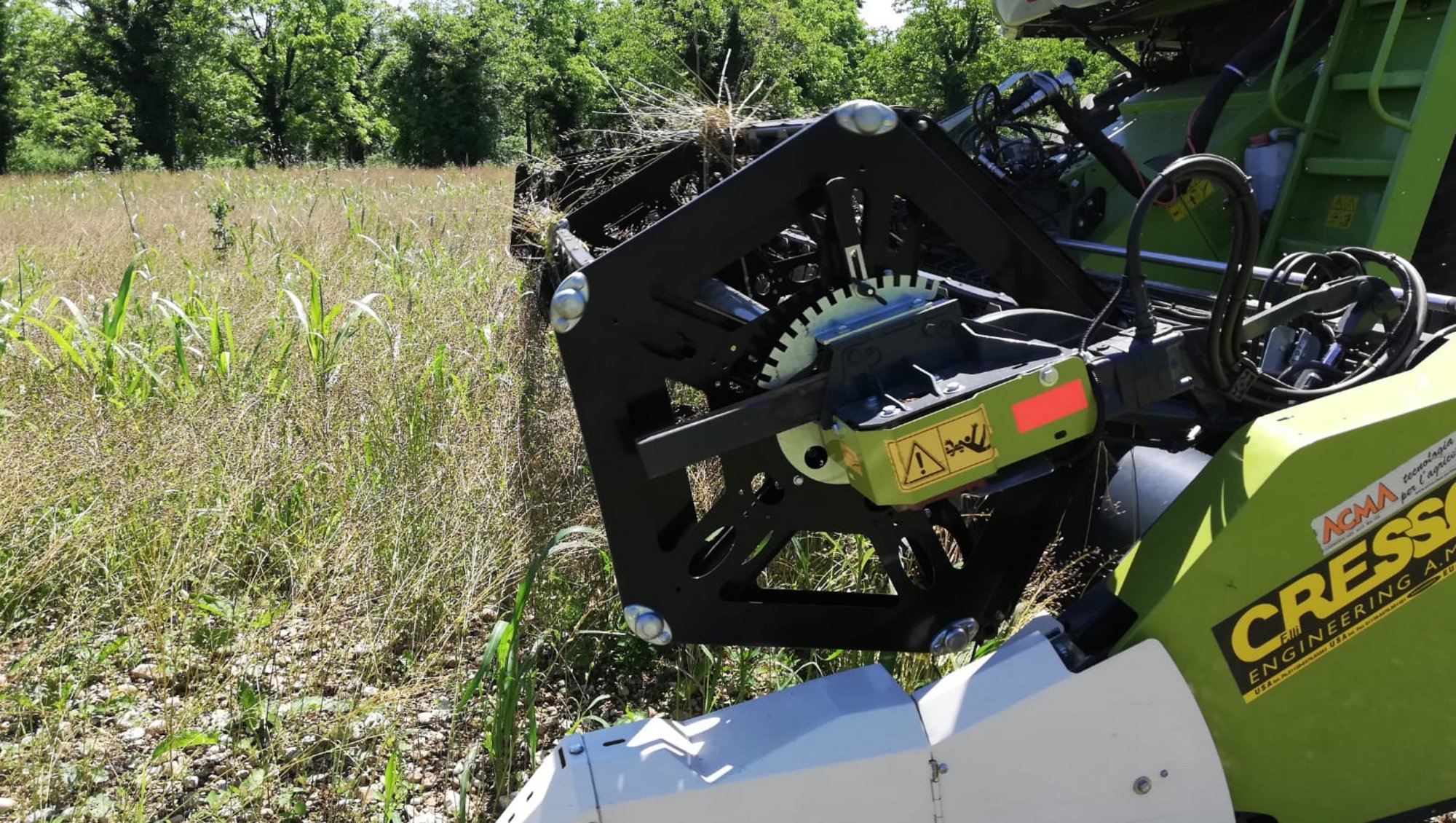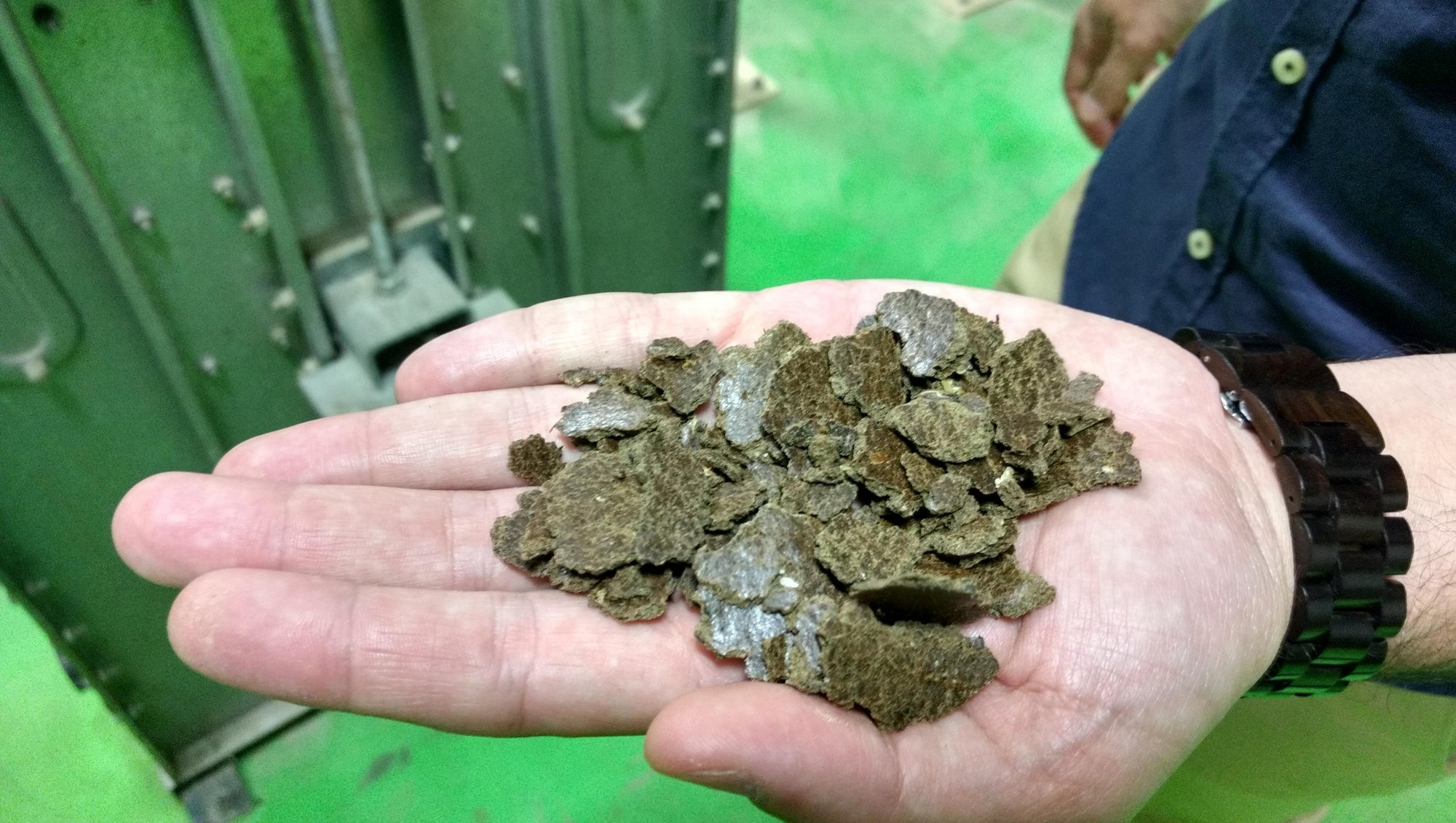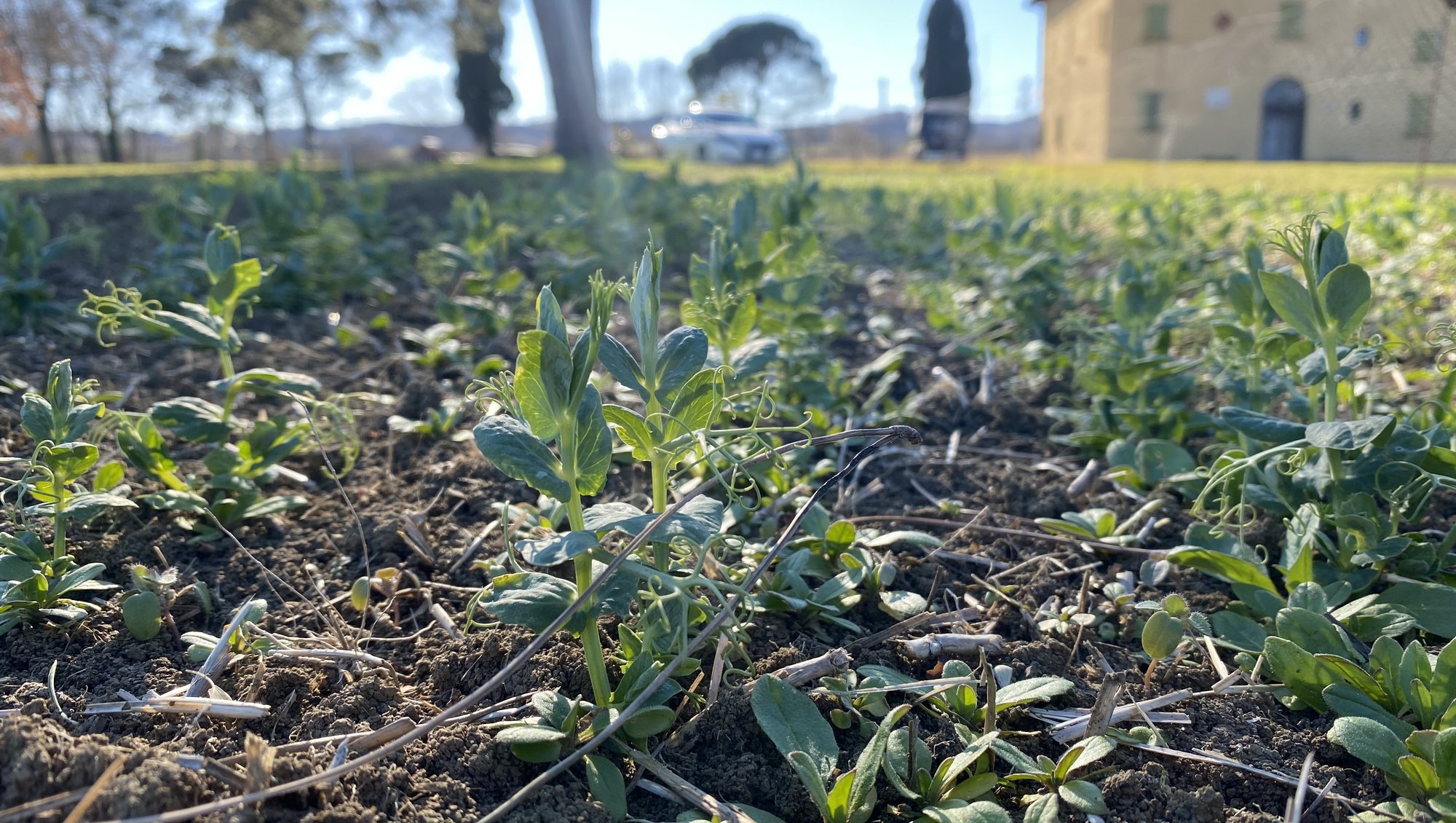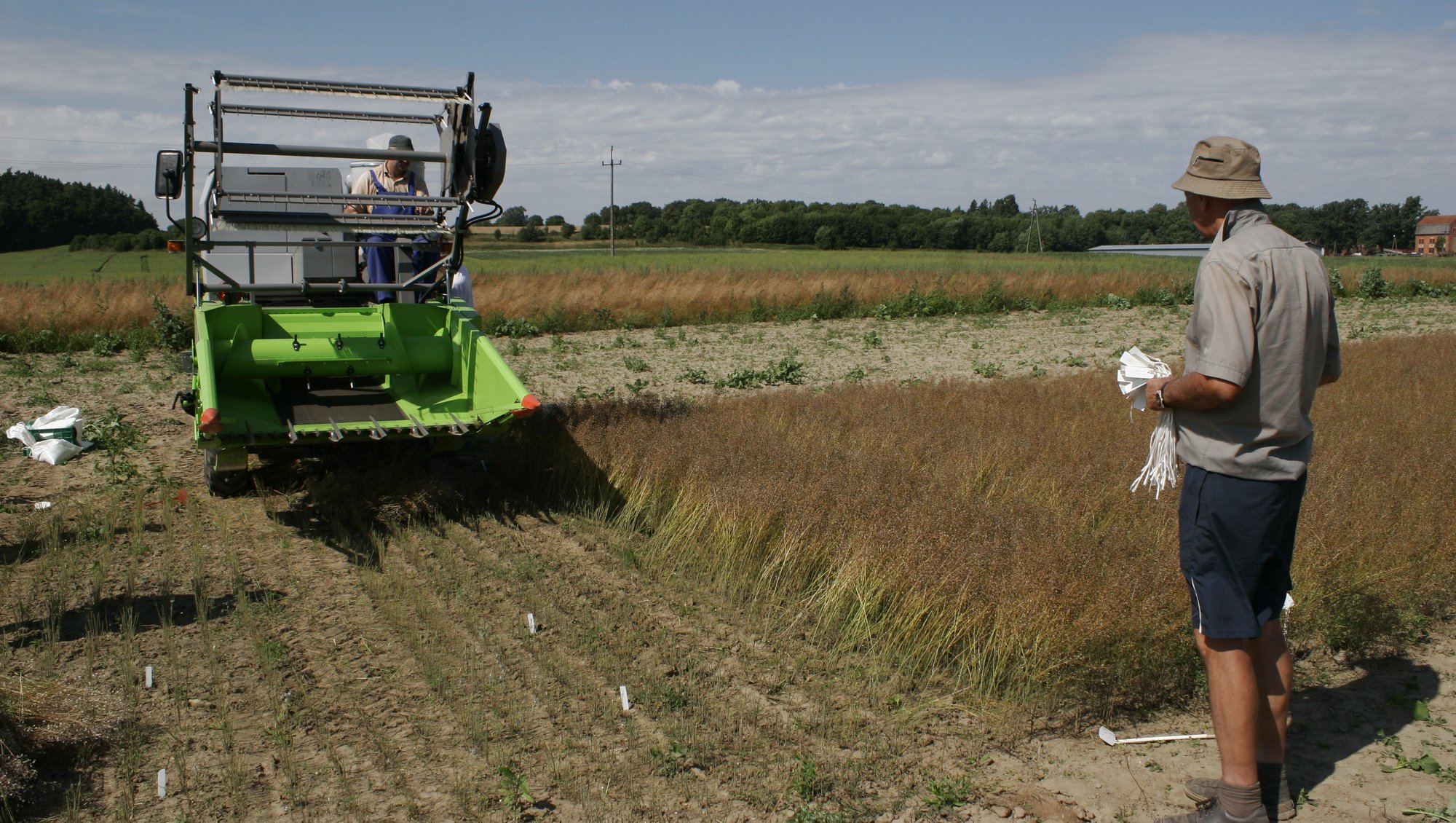SCOOP
Developing intercropping systems with camelina to increase the yield and quality parameters of local underutilized crops
There is clear evidence of benefits from crop diversification on soil and ecosystem, especially in organic farming. Therefore, the SCOOP project is focused on innovative and diversified organic intercropping systems aimed at preserving ecosystem and agricultural land integrity, biodiversity, and food/feed security. The new intercropping will be based on camelina, a multi-purpose oilseed crop highly tolerant to drought and cold and able to achieve sustained yields under rainfed conditions.
Background
Camelina is an oil crop highly tolerant to drought and cold and able to achieve sustained yields on lower quality soils thanks to its fast germination, wide sowing period (from fall to spring) and ability to compete with weeds. Camelina seeds contain 35–40 percent of oil and are rich in polyunsaturated fatty acids (PUFAs), i.e. α-linolenic acid (omega-3), and tocopherols (Vitamin- E). Camelina cake represents a valuable co-product rich of essential amino acids, particularly those that contain sulfur which is usually lacking in pulses. Research already proved that camelina could be appropriate candidate for intercropping systems, which strongly increase diversity of soil microbes, flora and fauna, with consequent positive impacts on crop productivity and biodiversity.
Aim
The SCOOP project aims at identifying the best organic camelina intercropping systems with local crop varieties like pulses, ancient cereals or herbs and their demonstration. The project covers a broad range of pedo-climates, e.g. continental (Poland), pannonian (Bulgaria) and mediterranean (Italy and Türkiye).
Intercropping systems could provide relevant ecosystem services due to their self-contained symbiotic nitrogen fixation ability (in case of legumes), phosphorus remobilization promoted by mycorrhiza and soil bacteria, both leading to less external nitrogen and phosphorus inputs and energy consumption, improved biodiversity, and a general soil improvement. Therefore, camelina intercropping can be a win-win solution allowing:
- early soil coverage, enhancing the efficient use of natural resources, preventing nitrogen leaching and soil erosion
- reduction of inputs for pest and disease control due to a higher competitive advantage over weeds and diseases of diversified cropping systems
- promotion of seed quality traits of produced crops;
- new market opportunities.
The project step by step
- Identifying, through local living labs (LL), the best companion-crop to be intercropped with camelina
- Developing high-performing intercropping systems for organic farming
- Demonstrating the feasibility of the proposed intercropping systems at farm level
- Quantifying the environmental benefits related to the adoption of intercropping in terms of belowground biodiversity promotion, and decrease in pest, disease and weed
- Setting-up innovative post-harvest processing systems to efficiently separate seeds for specific food/feed applications
- Analyzing seed quality of the different species identifying those more suitable for meeting local consumers’ needs and expectations
- Assessing energy, economic and environmental impact of the SCOOP intercropping systems
- Disseminating the intercropping opportunities and advantages to farmers, practitioners and end-users
Coordinator & Partners
Coordinator
Michał Krzyżaniak, University of Warmia and Mazury in Olsztyn, Poland, michal.krzyzaniak@uwm.edu.pl
Partners
- University of Warmia and Mazury in Olsztyn, Poland
- Alma Mater Studiorum – Università di Bologna (UNIBO), Italy
- Central Research Institute of Field Crops (CRIFIC), Türkiye
- Italian Association of Organic Agriculture (AIAB), Italy
- Agricultural University Plovdiv (AUP), Bulgaria
- Biosfera Sp. z o. o. (BIOSFERA), Poland
Funding institutions
- The National Centre for Research and Development, Poland; The Ministry for Agriculture, Italy; General Directorate of Agricultural Research and Policy, Türkiye; The Bulgarian National Science Fund (BNSF).

